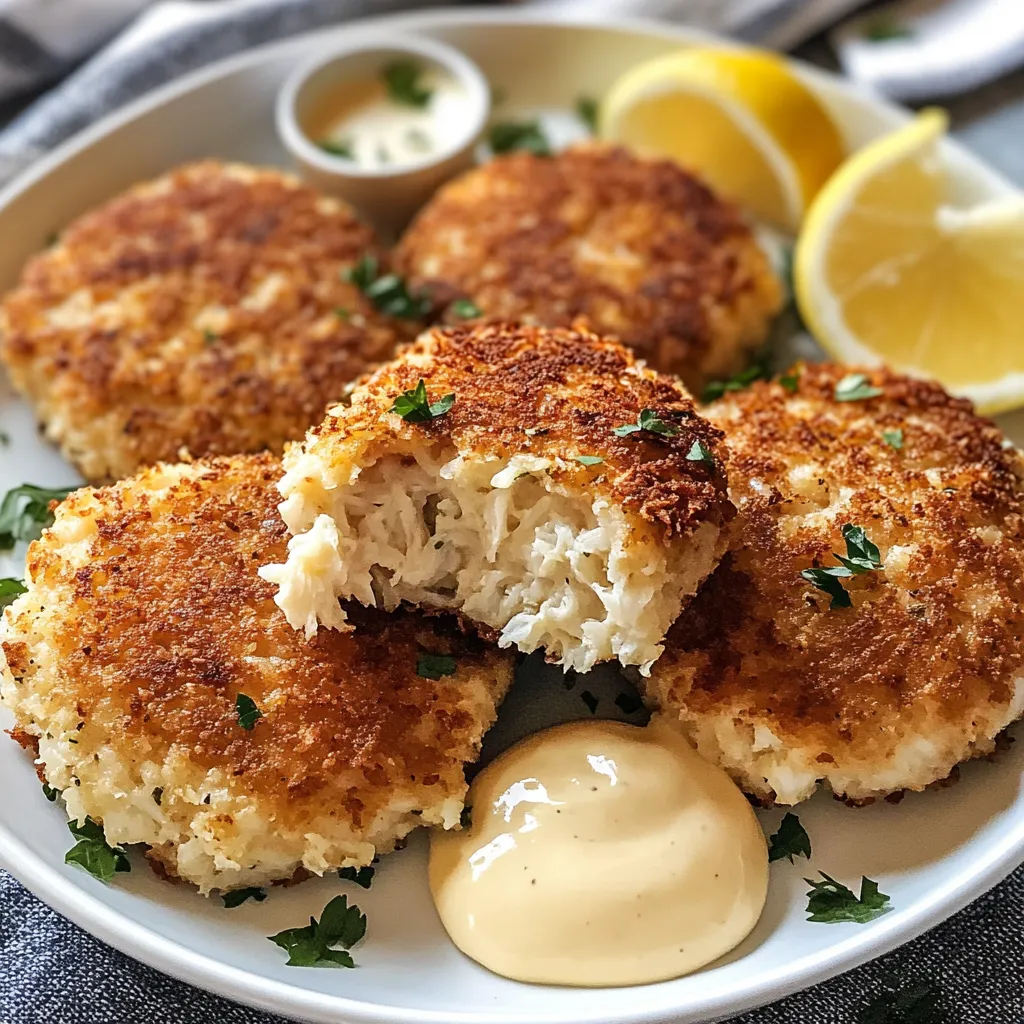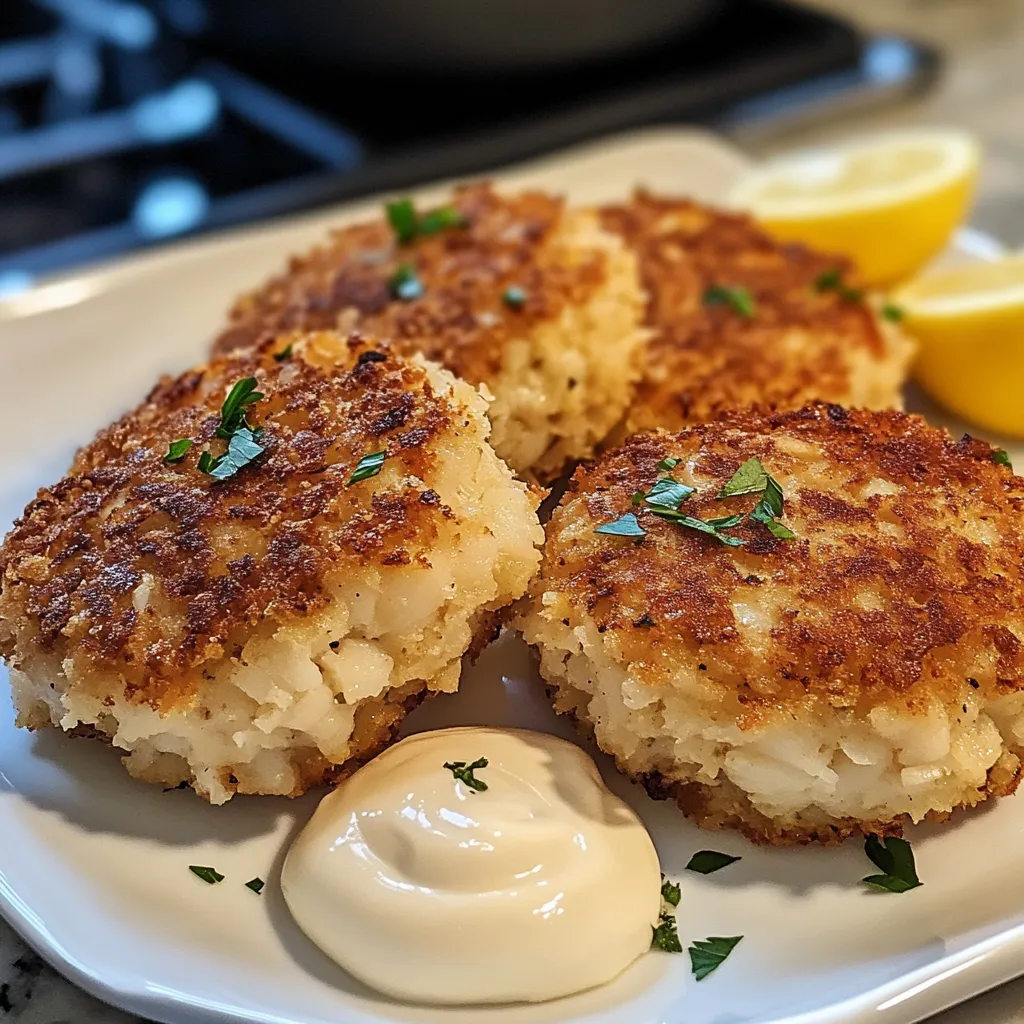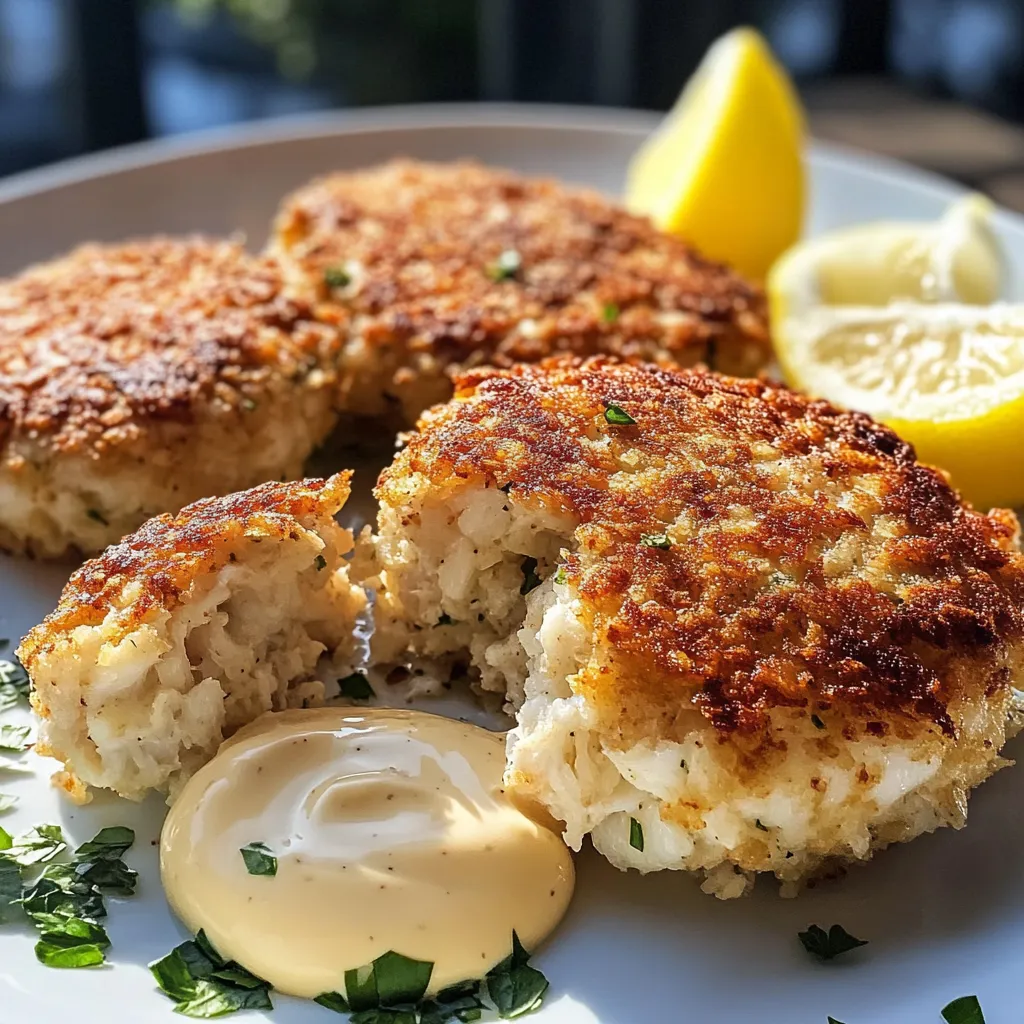 Pin it
Pin it
Crunchy on the outside and loaded with juicy crab inside, these classic Maryland crab cakes deliver all those East Coast vibes right at your kitchen table. Every forkful is a tasty combo of sweet seafood and gentle spices that let the crab do all the talking. Making them at home is way easier than you’d think and instantly kicks your weeknight meal up a notch.
I first tasted real Maryland crab cakes as a kid vacationing near Chesapeake Bay. Our neighbor, an older lady, called us over for dinner and served these gorgeous crispy patties that totally changed how I saw seafood. Her tip? Keep things simple so the crab stands out. Years later, whipping these up still takes me right back to that candlelit dock and super-fresh shellfish.
Essential Delicious Parts
- Lemon juice: A fresh squeeze brightens the whole dish and wakes up the sweet crab flavor.
- Fresh parsley: Chopped parsley gives a pop of color and freshness that lightens everything up.
- Old Bay seasoning: Maryland’s secret cheat code—paprika, celery salt, and a bunch of spices that set off the seafood perfectly.
- Worcestershire sauce: Gives that deep, savory boost and pairs with the sweetness of the crab.
- Dijon mustard: Adds a mild punch and a little tang without drowning out the other flavors.
- Large egg: Everything sticks thanks to the egg, plus it makes the cakes richer.
- Mayonnaise: Keeps it all moist and helps the exterior get that beautiful golden look in the pan.
- Fresh breadcrumbs: Just enough to hold it together, but not enough to hide the crab.
- Lump crab meat: The star—chunky, sweet crab meat gives you that grown-up texture with every bite.
How to Throw Them Together
- Let Everything Chill:
- Line up your patties on a tray with parchment paper, lay some plastic over them lightly, and park them in the fridge for at least half an hour—a couple hours is even better. This keeps them from falling apart when you cook.
- Mix it All Up:
- Whisk a big egg with a quarter-cup of mayo until super smooth in a bowl. Toss in a splash of lemon juice, chopped parsley, a dollop of Dijon, then add in Worcestershire, Old Bay, plus salt and pepper. Mix until combined and set aside.
- Shape Your Patties:
- Pour the mayo-egg mix over your crab and breadcrumb bowl. Fold it all together gently—use your hands or spatula and lift rather than mash, so you keep those crab pieces whole. Let your mixture hang out for five minutes, then shape into six rounds about three inches across.
- Prep the Crab:
- Pick through the lump crab, taking out any little cartilage or shell with your fingers—go easy so you don’t shred the meat. Move it into a big bowl, sprinkle over half a cup of breadcrumbs, and barely toss to combine.
 Pin it
Pin it
Back in culinary school, our chef hammered home how important it is to keep crab cakes cold before cooking. Warm ingredients break early and ruin the texture—found that out the hard way when I skipped chilling and ended up with crab hash instead of cakes. Turns out, patience totally pays off, especially with delicate seafood like this.
Top Cooking Tips
To get that awesome crispy crust but keep the inside moist, you’ll want a heavy skillet on medium-high heat. When a drop of water dances around, add a quarter-inch of a neutral oil like canola and wait for a shimmer—but don’t let it smoke.
Best Sides and Extras
Serve up your crab cakes with lemon wedges and a little bowl of mayo jazzed up with hot sauce, some dill, and a bit of lemon peel. For a fresh summer plate, dish them up with a corn and tomato salad tossed in olive oil, white wine vinegar, and basil. Doing brunch? Swap the usual muffin in eggs benedict for a crab cake and drizzle with lemony hollandaise.
Sweet Twists to Try
Want a southwest flavor? Mix in diced jalapeño and cilantro and switch Old Bay for cumin or chili powder. Cool it down with some avocado crema. Or go Mediterranean—add minced sun-dried tomatoes and oregano, and dunk in a lemon garlic aioli.
How to Keep Them Fresh
If you’re planning ahead, shape the crab cakes and cover them in the fridge for up to a day before cooking. To freeze, line them up on a tray, freeze solid, then pop into a container with parchment in between. Thaw in the fridge overnight before frying up.
 Pin it
Pin it
Maryland crab cakes really show how a simple approach brings out the best in amazing ingredients. After making these for years, I’ve found that letting the flavor of crab stay front and center wins every time. Nothing better than guests smiling after the first bite—it’s like instantly being back on the Chesapeake, wherever you are.
Frequently Asked Questions
- → Which crab meat works best for Maryland crab cakes?
- Go for lump or jumbo lump crab meat if you can. Big pieces mean you actually taste the crab, and they give the cakes an epic texture. Skip claw or backfin—their flavor is a little too strong and they’re usually more shredded.
- → Is it okay to bake instead of fry?
- Totally! Pop them in a 375°F oven and bake for around 15 minutes, ‘til they’re nicely golden. They won’t get quite as crispy as frying, but baking saves some oil and still tastes great.
- → Can you prep these cakes ahead of time?
- Yep! Shape them and stash in the fridge (covered) up to 24 hours before you want to cook. Or freeze the raw cakes on a tray, toss into a freezer bag, and keep for a month. Thaw them in the fridge before frying or baking.
- → What should you serve with Maryland crab cakes?
- Coleslaw, a pile of corn, or any simple salad are tried-and-true sides. Feeling hungrier? Add roasted potatoes or a bowl of rice. Lemon wedges, tartar, or a remoulade sauce go great for dipping too.
- → Why do crab cakes break apart when cooking?
- Usually, it’s because they weren’t chilled long enough before cooking. Give them at least 30 minutes in the fridge to firm up the mix. Be gentle flipping them, and make sure the oil is good and hot before you add the cakes.
